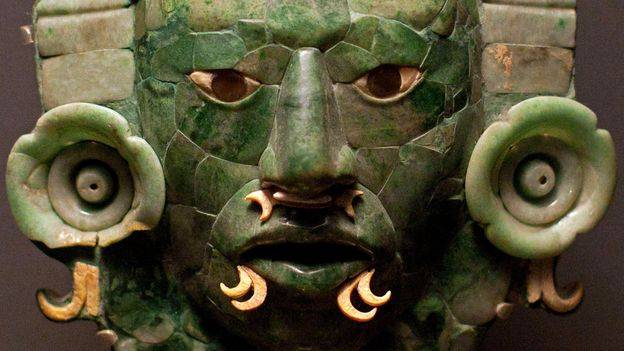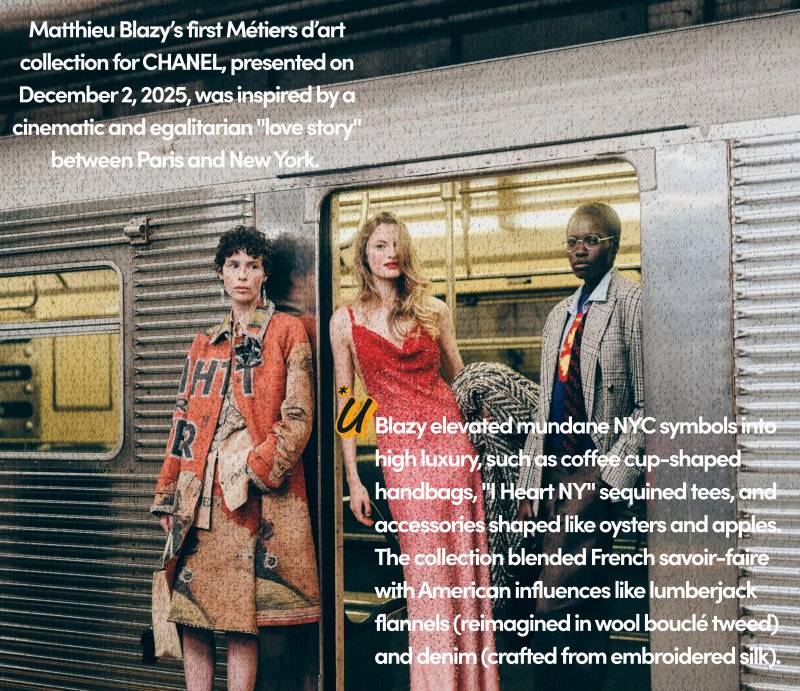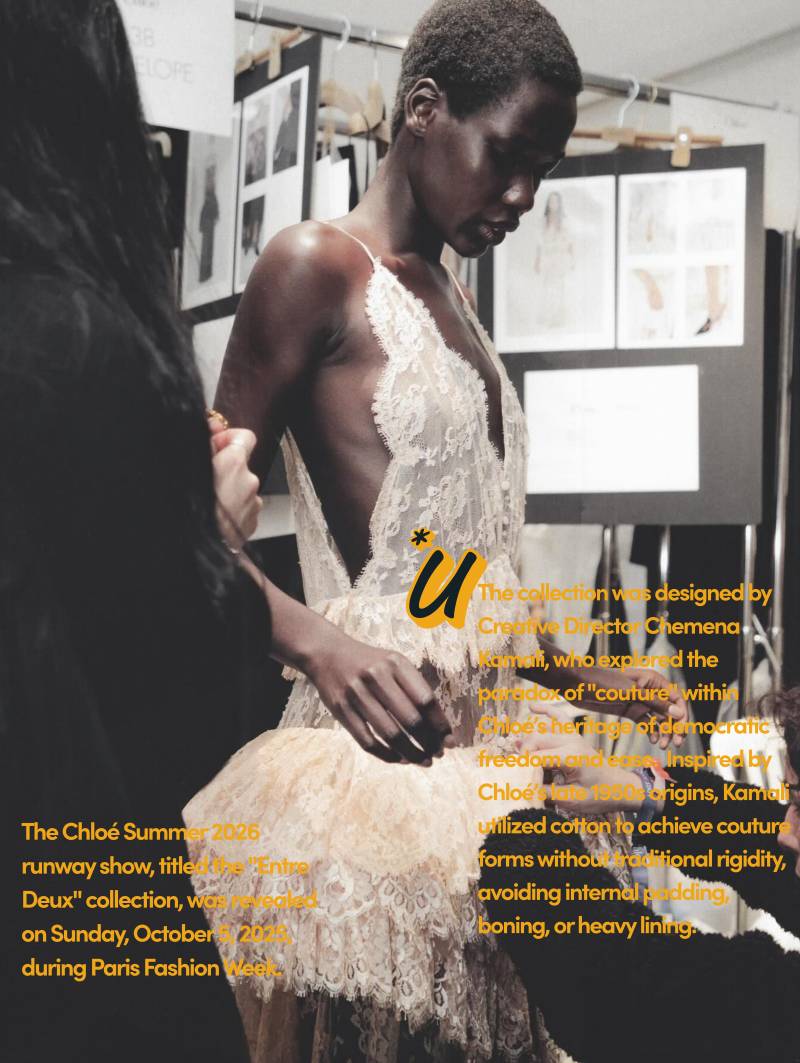The colour green is synonymous with nature and the environmental movement – an association that goes back thousands of years, writes James Fox.
In February 1970, a ragbag of hippies and activists gathered in Vancouver, Canada to discuss a planned nuclear test on the Alaskan island of Amchitka. They eventually agreed to sail to the test site and protest against the explosion in person. At the end of the meeting, the chairman raised two fingers to the room and shouted "Peace!". After a brief pause, one young attendee responded with a now immortal line: "Let's make that a green peace". The group were so taken with the phrase that they named their first boat the Green Peace.
More like this:
- The colour that means both life and death
- The climate clues hidden in art history
- The surprising roots of the mysterious Green Man
Over the last 50 years, the environmental movement has become so closely associated with the colour green that it's almost impossible to see a green poster, label or recycling bag without thinking about our planet's future. But though that connection is the product of a very recent crisis, its origins go back some way. We have identified green with nature and its processes for thousands of years. Indeed, the very word "green" comes from the ancient Proto-Indo-European word ghre, meaning "grow".
Between the eighth and 13th Centuries, Islamic philosophers and scientists wrote treatises on sustainable agriculture, pollution and wildlife conservation, and compiled a bill of rights for animals
The human species, which emerged in the verdant forests and savannas of Africa about 300,000 years ago, has a special biological bond with green. Our eyes might even have evolved specifically to see the chlorophyll in plants. Unlike most mammals, who are red-green colour blind, we and other primates developed a third cone cell. This additional photoreceptor enabled our ancestors to spot ripe red and yellow fruits against a backdrop of green foliage, and to distinguish different green leaves from each other. In daylight conditions, human eyes are more sensitive to green than any other hue.
With the advent of agriculture, we started to use green as a symbol for nature and its processes. Archaeologists have recently found an extraordinary hoard of green beads and pendants in the Levant, dating back some 10,000 years. The researchers believe that these objects, many of which had come from hundreds of miles away at great cost, were chosen because they resembled young leaves and might have been used by early farmers to invoke rainfall or fertilise crops.
The ancient Egyptians, who were farming the banks of the Nile from about 8000 BCE, likewise identified their crops with green. Their term for the colour was wadj, which also meant "flourish", and was represented in hieroglyph by the flowering stalk of a papyrus plant. Egyptian painters often depicted their god of agriculture, Osiris – who was responsible for flooding the Nile's banks, filling the soil with nutrients and pushing the first green shoots up through the fields – as a bright green being.
'Green thoughts'
All over the world, people communed with nature through green materials. Jade, for instance, was used to make objects that would guarantee a successful harvest. The Maya buried their leaders with jade death masks for precisely this reason. One such object, made between 660 and 750 AD in modern-day Mexico, depicts an unknown ruler surrounded by plant symbolism. His intimidating face is flanked by two flowers, his headdress swells into a green mountain, and two sprouts of maize point towards the future. The mask implies that its wearer will, like Osiris, infuse the earth with fertility, ensuring that his living subjects thrive.
Few cultures respected nature like those of the Islamic world. More than a millennium before the rise of the environmental movement, the Quran was instructing Muslims to look after their habitats. In extraordinarily prescient words, it describes humans as temporary stewards of the ecosystem, advising them not to disturb the delicate balance of creation by excessive consumption or unnecessary destruction. Between the eighth and 13th Centuries, Islamic philosophers and scientists even wrote treatises on sustainable agriculture, pollution and wildlife conservation, and compiled a bill of rights for animals.
It shouldn't come as surprise, then, that Muslims were fond of green. Muhammad thought it was the most beautiful colour of all, akin to a visual oasis in a largely brown Middle Eastern desert. "Three things of this world take away sadness," he is said to have remarked: "water, greenery, and a beautiful face". The Quran, meanwhile, described paradise itself as a lush and well-irrigated garden, dominated by orchards of supernaturally green trees. The text used a unique adjective to denote their special hue: madhamatan. It is the only word in the Quran's shortest verse.
Green is no longer just a hue; it has become a political agenda, a way of life
Western societies took longer to embrace the beauty of nature, and by extension, green. But by the second half of the Middle Ages, European writers were infusing the colour with their new-found faith in the landscape, connecting it to fertility, growth, spring, hope and joy. In one 15th-Century text, the French herald Jean Courtois couldn't contain his enthusiasm for the colour of chlorophyll: "There is nothing in the world more pleasant than the beautiful verdure of fields in blossom, broad-leafed trees covered in foliage, banks of the rivers where the swallows come and bathe, stones that are green in colour, like precious emeralds," he wrote. "What is it that makes April and May the most pleasant months of the year? It is the verdure of the fields, which prompts the small birds to sing and to praise spring and its delightful gay green livery."
By the end of the 17th Century, English poets were beginning to realise, as we do today, that green spaces can be profoundly therapeutic. Andrew Marvell's much-loved poem The Garden is a hymn to the curative capacities of the colour. "No white nor red was ever seen so amorous as this lovely green," he wrote. Marvell went on to describe his imagined garden as a place of peace and escapism – one that can replace our worldly worries with, as he so memorably put it, a "green thought in a green shade".
New beginnings?
In recent years – and particularly now, as COP26 unfolds in Glasgow – most of our "green thoughts" are tainted with fears of ecological disaster. Since that raucous meeting in Vancouver in early 1970, the colour has become the official label of the environmental movement. There are now more than a hundred recognised "Green" parties around the world, which have together turned the colour into a defining ideology of our times, comparable in some ways to "conservatism", "socialism" or "liberalism". Green is no longer just a hue; it has become a political agenda, a way of life.
Cultural figures have spearheaded this movement from the start. The artist Joseph Beuys helped found the world's first national "Green Party", die Grünen, in Germany in January 1980, and played a major role in physically greening the world, planting 7,000 oak trees around the German city of Kassel from 1982. The British artist David Nash has spent the last four decades making plant-based sculptures in North Wales. Ash Dome, a circular vaulted space made from 22 carefully trained ash trees, has been growing since 1977. It was initially conceived as an act of ecological optimism. "We were killing the planet," Nash has recalled. "Ash Dome was a long-term commitment, an act of faith".
Not everyone was so hopeful. In the late 1990s and early 2000s, the Icelandic-Danish artist Olafur Eliasson released large quantities of uranine (a fluorescent yellow-green dye) into waterways around the world without warning, turning rivers and streams lurid green. Green River was widely interpreted through an ecological lens. Critics couldn't help but be reminded of the millions of tonnes of waste that enters the world's waters every day, its colour a caustic allusion to the verdant habitats they pollute.
Other artists are simply inspired by the uplifting beauty of nature, as their ancestors had been before them. Towards the end of his life, Howard Hodgkin loaded a thick brush with emerald-green paint, and then, in one bold motion, sketched a voluptuous looping form across a wooden panel. The finished image might at first sight look abstract, but it depicts something with which all of us are deeply familiar: it is a leaf – bright, fresh and undulating with life.
Towards the end of his life, the abstract painter Howard Hodgkin produced Leaf, an abstract sweep of emerald-green that vibrates with vitality (Credit: Howard Hodgkin)
Towards the end of his life, the abstract painter Howard Hodgkin produced Leaf, an abstract sweep of emerald-green that vibrates with vitality (Credit: Howard Hodgkin)
While the future of our planet remains uncertain, many scientists are convinced that leaves, and the miraculous green pigment that lurks within them, will prove to be a decisive weapon in our battle against climate change. This is as it should be. After all, for early farmers wating for shoots to emerge from the soil, for desert-dwelling Muslims dreaming of paradise, and for modern-day activists determined to bring about a sustainable future, green was, and is, a colour of hope – the hope that, after a long, cold winter or a drought-ridden summer, the arrival of chlorophyll will herald a new beginning.
The World According to Colour: A Cultural History by James Fox is out now.
If you would like to comment on this story or anything else you have seen on BBC Culture, head over to our Facebook page or message us on Twitter.
And if you liked this story, sign up for the weekly bbc.com features newsletter, called The Essential List. A handpicked selection of stories from BBC Future, Culture, Worklife and Travel, delivered to your inbox every Friday.
SOURCE : BBC




